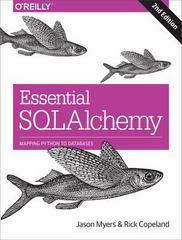Answered step by step
Verified Expert Solution
Question
1 Approved Answer
Computer science question pls give me solution very fast don't use any AI otherwise I will give you multiple dislike and report to Chegg Give
Computer science question pls give me solution very fast don't use any AI otherwise I will give you multiple dislike and report to Chegg
Give an implementation level description of a Turing machine. You can check for an empty tapecell as a character. Convert from decimal to Unary: You are given a digit integer on a tapeand you need to replace it with that many s They do not have to be at the beginning of thetape. Examples:"A Turing machine implementation for the conversion from decimal to unary would beginwith a blank tape. The machine would begin in the leftmost cell and scan to the right until it reachesa cell containing data. It would then read the value in that cell and wrte the appropriate number ofs in the adjacent cells. Finally, it would return to the leftmost cell and repeat the process until thetape ran out.For instance, if the input was the machine would write in the first cell beforemoving to the second. It wouid then write in the following four cells before returning to theinitial cell. Then, It would put in the first cell and go to the second. it would then write inthe next four cells before returning to the first cell and repeating the process until the end of thetape is reached.Similarly, if the input were the machine would write in the first cell before on tothe second. It would then write in the folowing seven cells before returning to the firstcell. Then, it would put in the first cell and go to the second. It would then write inthe next seven cells before returning to the first cell and repeating the process until the end of thetape was reached.Lastly. given the input the computer would perform no action because there are nononblank celle Give the state transition diagram formal description for the Turing machine in Problem Question marksCatA mass of cotsumers is uniformly distributed aong the interal Two firs, A and B areUnuPtz f he consumes from firm B In the following, we aume that the grosutility u is sufficiently high, so that the market ill be oovered and all consumers will get positiveutility in equilibrim Both firms have a cost function equal to Teubititute X for the lst number of yotur student ID numbera Find the demand function for both firmsc Nowb Asume firms set their prices simaltaneously Solve for the Naalh equilibrium prices, andcompute the equilibrium peofits marksland profits.Stackoelhereequilibrium conoepthis game,lesder, Exolain brieflyd Compare the results obtained in parts b and c and explain the intuition for such ditference.Ate the eosilibcia efcient?O Suppoe that there was a technology that allowed firm A to credibly cotnnmit not to changeb Derive the consurner's indirect utility funtion, BBDXq where yon shouldonly irm A had scces to this tecnology, how tmuch wold frm A be wiling to AY for itHow would your awer change if the technology was auctioned to the best bidder betweenfirms A and B marksAsune that firms A and B can perfectly discriminate between locations. That is firm i chooses&price p for esch location z c Firma riow cotnpete by sinultaneously choosing the pricingfunctions p and p: There is no possibility of arbitrage, and if a consumer mnay be indiferentbetween firms A and B they go to the closest firm Consider a consumer whose utility function and budget constraint are given byux yxyand par tpy I, respectively, where p is the price of good x p is the priceof good y and is the consumer's income.ions, x PD and yPpc Calculate the partial derivatives, CulP,ula, and the ratio Fid the Nashequilibrium peicing funetions That is you bieed to find the equilibriuan peioesof every firm in every Jocation Derive the expenditure function, e p Pcosans the compensated demand for good x Shepherds lemma marksthat this term in the ordinary demand function from part a Roys identity Minimize the expenditure level necessary to achieve some arbitrary utility target uand solve the fistorder conditions for the compensated or Hicksian demandfunctions, rPP and yPPue Calculate the value of x p nd ex lp and show that x and y are net substitutes.Explain with the use ofa diagram how x and y can be net substitutes but not grosssubstitutesupS to $ evaluate the individual's gain in terms of equivalent variation.itten in terms of e constrant marks Calculate the partial derivative, etp,.Pp and verify that the resulting termts markslh Invert the expenditure function to solve for uPPI Verify that this is indirectutility upoP and the individual's$ If the$S to S evaluate the indit T the pnce of good x falls from Suppose Py$l and the individual's income is $ If the price of good x falls fromfor LVerifyk Draw a graph that shows compensating variation, equivalent variation, and the changein consumer surplus. Wha

Step by Step Solution
There are 3 Steps involved in it
Step: 1

Get Instant Access to Expert-Tailored Solutions
See step-by-step solutions with expert insights and AI powered tools for academic success
Step: 2

Step: 3

Ace Your Homework with AI
Get the answers you need in no time with our AI-driven, step-by-step assistance
Get Started


